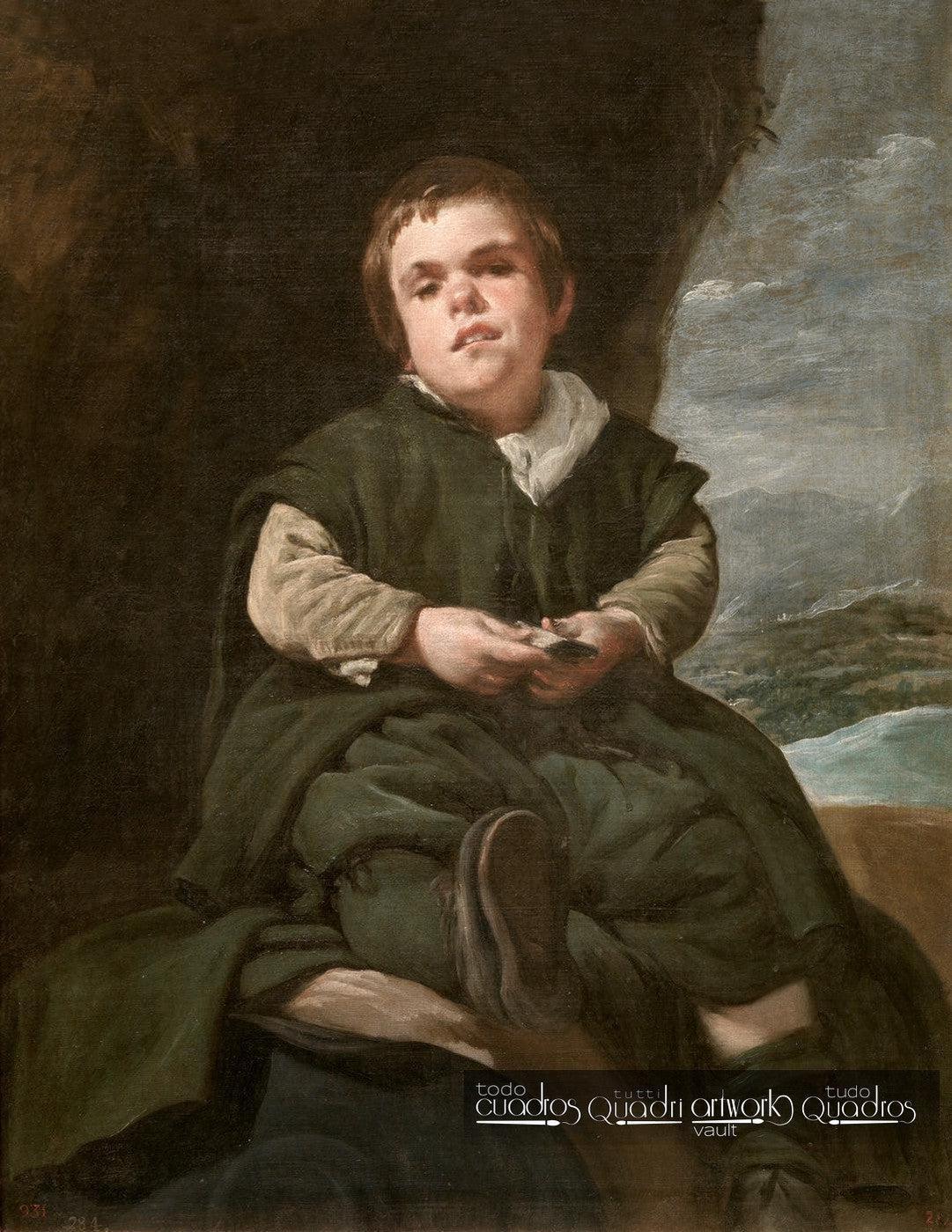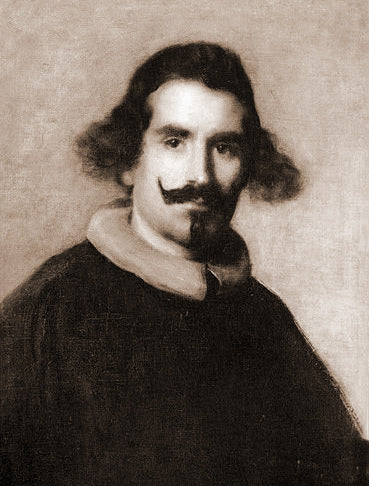

The Boy from Vallecas (Francisco Lezcano), Velázquez
- Oil on linen canvas
- 100% hand-painted
- Reproduction painting
- Available for online purchase
- See quality
- Shipping to the US
- Money-back guarantee
- Customer reviews
| Author: | Diego Velázquez |
|---|---|
| Original Title: | El Niño de Vallecas |
| Type: | Painting |
| Style: | Baroque |
| Medium | Oil |
| Support: | Canvas |
| Year: | 1635-1645 |
| Genre: | Retrato |
| Located: | Prado National Museum, Madrid. |
The work reveals the full mastery of Baroque naturalism that characterizes the artist’s maturity. The modeling of forms through subtle glazes and the tonal gradation of the background create an enveloping atmosphere in which light precisely defines the sitter’s psychology. The brushwork is loose and textured in the garments, especially in the green and ocher tones of the cloak, but more restrained in the face, where each shade of shadow reinforces the individuality of the model. The contrast between the luminous landscape in the background and the darkened interior generates a visual tension that isolates the figure. This balance between realistic observation and emotional depth makes Lezcano’s portrait a paradigmatic example of Velázquez’s pictorial humanism.
The portrait of Francisco Lezcano, known as "The Boy from Vallecas," is one of Velázquez’s most remarkable works within his series of jesters and attendants of the court of Philip IV. Lezcano, who suffered from an intellectual disability—described at the time as “oligophrenia”—served as jester to Prince Balthasar Charles. The artist depicts him seated in a pastoral setting with a marine background, far removed from any theatricality, his expression calm yet slightly proud. He holds in his hands a deck of cards, a symbol of leisure, chance, or the role fate assigned him at court. The concentrated light on his face and hands, combined with the sobriety of the rest of the composition, lends the portrait a human depth that transcends his social and physical condition.
Choose options




